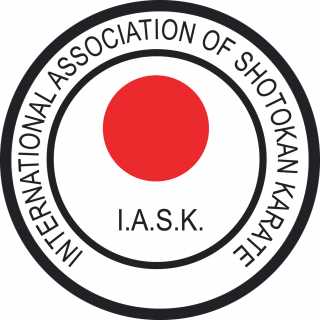
KARATE
(International Association of Shotokan Karate)
Kihon
Kihon is a Japanese term meaning "basics" or "fundamentals." The term is used to refer to the basic techniques that are taught and practiced as the foundation of most Japanese martial arts. The practice and mastery of kihon is essential to all advanced training. At the simple level this would include stances, punches, kicks, blocks, and thrusts but also includes basic representative kata.
At Shintai we practise Shotokan kihon (Kanazawa ryu), although techniques from other schools (e.g. JKA, WKF, Kyukushinkai, Shito-ryu) are taught.
Kumite -(click link for further details)
Kumite means sparring, and is one of the three main sections of karate training, along with kata and kihon. Kumite is the part of karate in which you train against an adversary, using the techniques learnt from the kihon and kata.
At Shintai we practise the set kumite from the IASK syllabus, as well additional set kumite drills (including those taught by Sensei's Kanazawa, Asano, Nakayama). We also have freestyle sparring (juyu-kumite), though this forms a small part of training, as we pursue "budo" karate, rather than "sport". Freestyle sparring is done without pads, therefore it is strictly monitored - the emphasis is on control. Children should gain confidence, balance and timing (as well as having fun!). In addition adults should develop self-awareness and humility - arrogant or violent behaviour is unacceptable.
Kata
Kata is a Japanese word describing detailed choreographed patterns of movements practiced either solo or in pairs. Kata are used in many traditional Japanese arts such as theater forms like kabuki and schools of tea ceremony , but are most commonly known for the presence in the martial arts. Kata are used by most traditional Japanese and Okinawan martial arts. Other arts such as t'ai chi ch'uan and taekwondo feature the same kind of training, but use the respective Chinese and Korean words instead.
At Shintai we practise all 26 shotokan kata, plus Seinchin, Gankaku-sho, Nijuhachiho and Tensho (depending on grade). In addition Sensei Tyrie also teaches the "Beijing 22" or Yang TaiChi short form.
The first Kata we teach at Shintai are the Heian Kata (although the Taikyoko Kata are sometimes considered the "first" kata we believe, as Kanazawa Kancho does, that you should start with the Heian Kata)
1. Heian Shodan - this is the first kata, and can be seen demonstrated in the following clip http://www.youtube.com/watch?v=Rgg8vF_l8ZI The Kata is demonstrated here by H. Kanazawa at normal and slow speed.
2. Heian Nidan - the second Kata, again shown by H. Kanazawa http://www.youtube.com/watch?v=VApwsBSx7mg
3. Heian Sandan- the third Kata, http://www.youtube.com/watch?v=1DDppu5CRrc
4. Heian Yondan - the fourth Kata, http://www.youtube.com/watch?v=AambQc8F0ZU
5. Heian Godan - the fith Kata, http://www.youtube.com/watch?v=ZagZ6egeRbw
After the Heian Katas other Kata are used for gradings, to learn techniques (including self-defence applications) and to improve balance, stamina and memory (both mental and physical memory). For grading purposes the next two Kata are Tekki Shodan and Bassai Dai.
All the above Kata need to be studied and learned before the student can be put forward for their Shodan grading (Black belt - first degree). For Shodan students can chose to demonstrate their favourite Kata from a selected group, plus the examiner may also choose any one of the Kata mentioned previously.